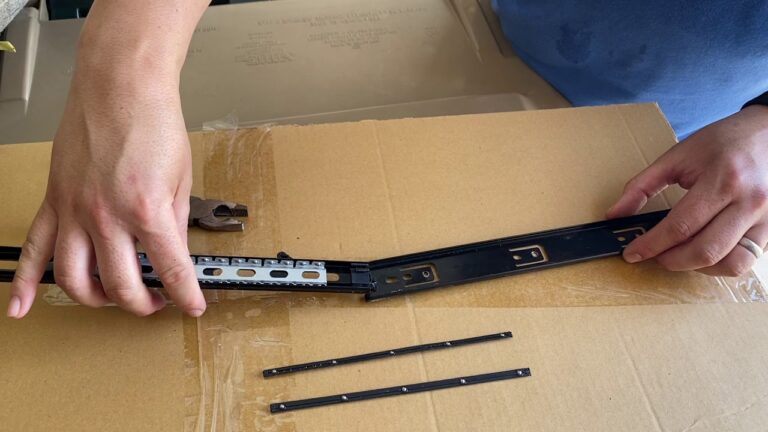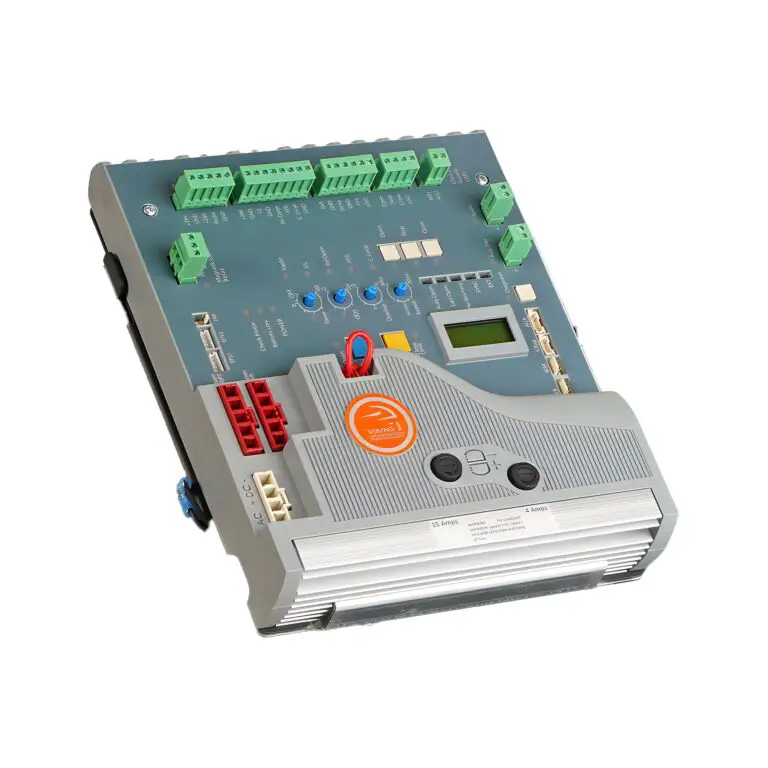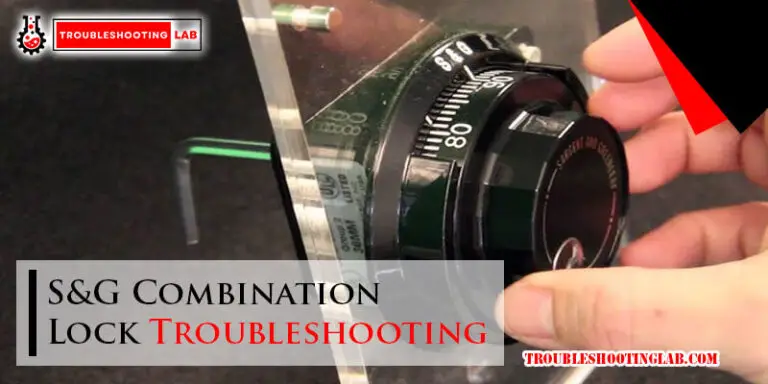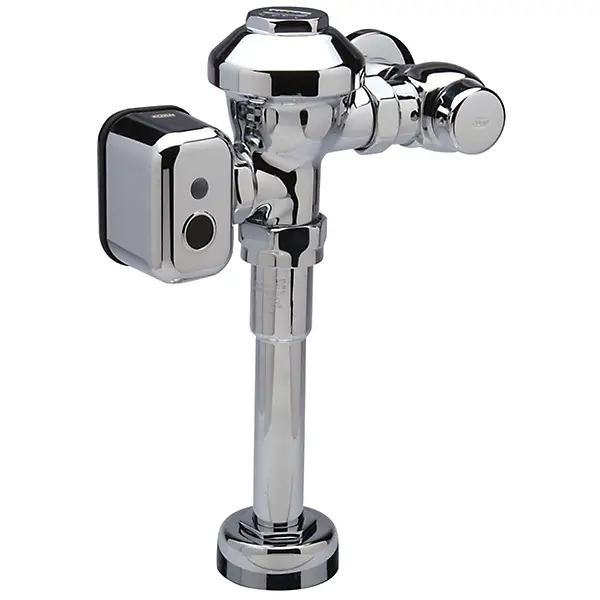Nabco Automatic Doors Troubleshooting: Quick Fixes Guide
Are you dealing with issues with your Nabco automatic doors? Whether it’s a door that won’t open, a strange noise, or inconsistent movement, these problems can quickly become a source of frustration.
Automatic doors are designed to make your life easier, not harder. The good news? Most common issues have simple solutions that you can address without calling in a professional. In this guide, we’ll walk you through straightforward troubleshooting tips to get your Nabco automatic doors back in top shape.
By the end, you’ll feel confident in identifying and resolving the problem, saving you time, money, and unnecessary stress. Let’s make those doors work like they’re supposed to!

Credit: nabco.nabtesco.com
Common Issues With Nabco Automatic Doors
Nabco automatic doors are known for their reliability and smooth operation. However, like any mechanical system, they can encounter occasional issues. Understanding these common problems can save you time and frustration when troubleshooting.
1. Door Not Opening Or Closing Properly
One of the most frequent issues is the door not opening or closing as it should. This can happen if the sensors are dirty or misaligned. Check the sensor lenses for dirt or debris and gently clean them with a soft cloth.
If the problem persists, ensure that the sensors are facing the right direction and are properly aligned. Misalignment often causes the door to behave erratically or not respond at all. Sometimes, resetting the door system by turning it off and on again can resolve minor glitches.
2. Unusual Noise During Operation
Is your door making grinding or squeaking noises? This usually points to worn-out rollers or a lack of lubrication. Inspect the rollers for visible wear and tear.
Add a small amount of lubricant to the moving parts, but avoid overdoing it as excess grease can attract dust. Regular maintenance can prevent this problem from recurring. If the noise continues, it might be time to replace the rollers or consult a professional.
3. Door Stays Open Or Won’t Close Fully
A door that stays open or refuses to close fully can be frustrating. This issue is often caused by obstructions in the door track or faulty sensors. Check the track for any debris or small objects that might be blocking the door’s movement.
Faulty sensors can also misread the situation and keep the door open as a safety precaution. Test the sensors by waving your hand in front of them to ensure they respond correctly. If they don’t, you may need to replace the sensors or adjust their settings.
4. Door Opens Or Closes Too Slowly
If the door operates at a snail’s pace, it might be due to an incorrect speed setting. Nabco doors often have adjustable speed settings, so consult your user manual to locate the controls.
Another possible cause is a weak motor or power supply issue. Check the power source and wiring for any faults. If the motor appears to be struggling, it might need servicing or replacement.
5. Door Reverses Direction Unexpectedly
Does the door start closing but then suddenly reopen? This could be due to the safety sensors detecting an obstruction. Even a small object or an invisible misalignment can trigger this reaction.
Inspect the area around the door and clear any obstacles. If the problem continues, recalibrate the sensors to ensure they are functioning correctly. Persistent issues might require professional diagnostics.
Have you encountered any of these issues with your Nabco automatic doors? If so, which fix worked for you? Share your thoughts or questions in the comments below!

Credit: www.doorcontrolsusa.com
Door Not Opening Or Closing
Automatic doors are convenient, but occasional issues can disrupt their operation. If your Nabco automatic doors are not opening or closing, simple troubleshooting steps can help. Diagnosing the problem early ensures smooth functionality and avoids further complications.
In this section, we will explore common causes and solutions for doors that fail to open or close. Follow these steps to identify and fix the issue efficiently.
Checking Power Supply
First, ensure the door has power. Check the power connection to the automatic door system. Verify if the control unit is securely plugged in and powered on. Inspect the breaker box for tripped circuits. Reset any tripped breakers to restore power.
Examine any visible wires for signs of damage. Damaged wires can interrupt the power flow. Replace faulty cables immediately. Regular inspections can prevent power-related failures.
Inspecting Sensors
Sensors play a key role in detecting movement and activating the door. Dirt, dust, or obstructions can block sensors. Clean the sensor lenses with a soft cloth. Avoid using harsh chemicals that might damage the sensors.
Test the sensors after cleaning by walking near them. If the door remains unresponsive, check the alignment. Misaligned sensors may cause detection problems. Adjust them according to the manufacturer’s guidelines.
Adjusting Door Tracks
Door tracks guide the movement of automatic doors. Debris or misalignment can hinder smooth operation. Inspect the tracks for dirt, small objects, or grease buildup. Clean the tracks thoroughly to ensure unobstructed movement.
If the door still struggles to open or close, check the alignment of the tracks. Loose or bent tracks can affect door motion. Tighten screws and straighten bends carefully. Proper alignment ensures the door moves smoothly along the tracks.
Unusual Noises During Operation
Your Nabco automatic door is designed to operate smoothly and quietly. So, when you start hearing odd noises like squeaking, grinding, or rattling, it’s a sign that something isn’t right. Ignoring these sounds can lead to bigger problems, but the good news is that you can often fix these issues with a few simple steps.
Lubricating Moving Parts
Unusual noises often come from dry or poorly lubricated components. Grab a can of silicone-based lubricant—it’s safe for most door parts and won’t attract dust. Apply a small amount to the moving parts like the tracks, hinges, and rollers.
Make sure to clean the components first. Wipe away dust and debris to prevent the lubricant from mixing with dirt, which can worsen the issue. If the noise persists after lubrication, it’s time to check for other potential problems.
Tightening Loose Components
Loose screws or bolts can cause rattling or clunking noises. Inspect the door’s mounting brackets, track, and frame to see if anything is wobbling. Use a screwdriver or wrench to tighten any loose hardware securely.
Even a slightly loose screw can throw the door’s alignment off. You might be surprised how much quieter your door becomes with a quick tightening session. Don’t forget to check both visible and hidden screws for maximum stability.
Replacing Worn-out Rollers
Worn-out rollers are another common culprit behind grinding or squealing noises. Over time, the rollers can crack, lose their smooth surface, or even break completely. If you notice visible damage, it’s time to replace them.
Purchase rollers that match your door model to ensure proper fit and performance. Replacing them is usually straightforward, but consult your door’s manual for specific instructions. A new set of rollers can make your door feel brand new and operate almost silently.
Have you been putting off addressing those annoying sounds? Tackling these small fixes now can save you time, money, and frustration down the road. Your door—and your ears—will thank you.
Intermittent Door Functionality
Intermittent door functionality is a common issue with automatic doors. It can disrupt operations and cause inconvenience for users. Understanding the reasons behind this can help resolve the problem quickly. Nabco automatic doors may face this issue due to sensor misalignment, control panel errors, or system glitches. Here are steps to troubleshoot and fix this problem effectively.
Testing Control Panel Settings
The control panel manages the door’s basic functions. Check if the settings are correct. Misconfigured options may cause the door to behave erratically. Ensure the door mode is set properly, whether for automatic or manual operation. Inspect the delay timers and opening speeds. These settings should match the door’s usual operation. Adjust them if needed and test the door’s functionality again.
Identifying Sensor Interference
Sensors play a vital role in door operation. Dirt, dust, or debris can block the sensors. Clean them gently using a soft, dry cloth. Nearby objects like plants or furniture can trigger false readings. Remove anything that might interfere with the sensor’s field of detection. Test the door after clearing the area. If issues persist, inspect for damaged sensors or loose connections.
Resetting The System
Sometimes, a system reset can fix intermittent issues. Turn off the door’s power supply from the main switch. Wait for at least 30 seconds before turning it back on. This allows the system to reboot and clear minor glitches. Observe the door’s operation after the reset. If the problem continues, consult a professional technician for further inspection.
Door Stuck In Open Or Closed Position
Automatic doors are convenient until they suddenly refuse to budge, either stuck wide open or firmly closed. If you’ve encountered this issue with your Nabco automatic door, you’re not alone. These problems can disrupt daily operations and leave you wondering where to start troubleshooting. Let’s break it down step-by-step so you can get your door functioning smoothly again.
Inspecting Obstructions
Obstructions are one of the most common reasons for a stuck door. Check the area around the door tracks and sensors for debris, dirt, or misplaced items. Even small objects can interfere with the door’s movement.
Give special attention to the tracks. Are they clean and free from buildup? Sometimes a simple sweep or wipe can solve the issue. Don’t forget to inspect the sensors—dust or spider webs can block their signal, preventing the door from moving.
Verifying Motor Function
The motor is the heart of the automatic door. If your door isn’t opening or closing, the motor might not be receiving power or could be malfunctioning. Start by checking the power supply to ensure the motor is properly connected.
Listen closely when you try to operate the door. Is the motor making strange noises or no sound at all? If it’s silent, it could indicate a wiring issue or a blown fuse. On the other hand, grinding or squealing noises might mean the motor needs maintenance or replacement.
Checking Lock Mechanisms
Sometimes the issue isn’t mechanical but involves the locking mechanisms. Automatic doors often have a safety lock that can get jammed, leaving the door stuck in place. Inspect the locks to see if they are properly disengaging when the door attempts to move.
Manually test the locks if possible. Are they stiff or difficult to operate? Lubricating the lock parts can help. In extreme cases, the lock itself might be damaged and require professional repair or replacement.
By addressing these specific areas, you can often resolve the issue without calling for professional assistance. Which step do you think will fix your door? Try them out and see the difference!
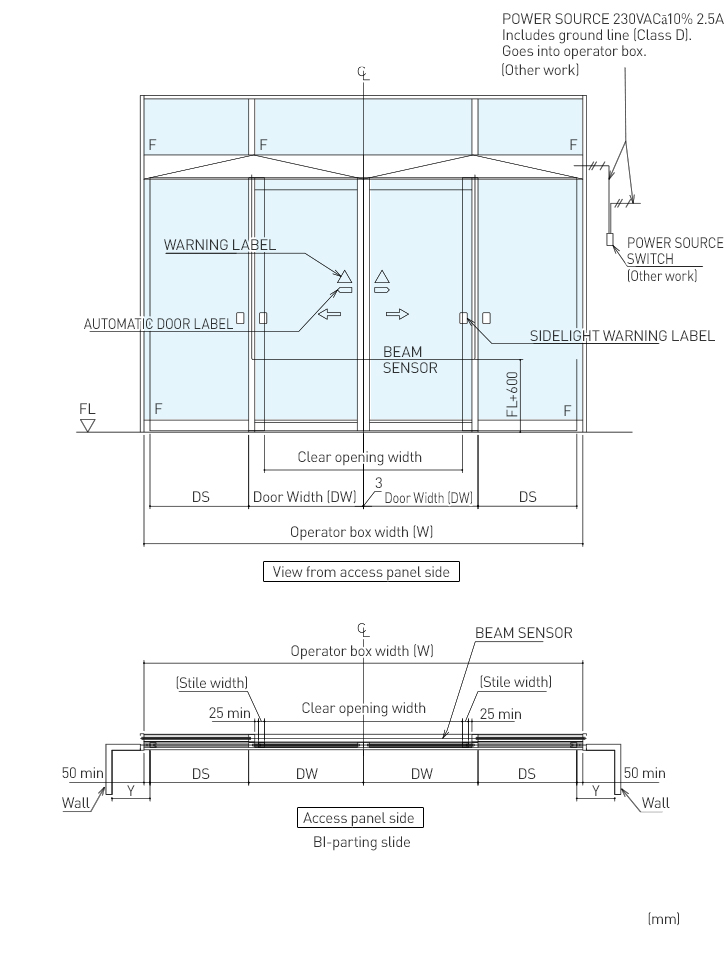
Credit: nabco.nabtesco.com
Sensor Alignment Problems
Sensor alignment problems are a common issue with Nabco automatic doors. Misaligned sensors can cause doors to malfunction or fail to open. Proper alignment ensures the sensors detect motion accurately. This is crucial for the safety and efficiency of the doors. Below, we’ll explore key steps to address sensor alignment issues effectively.
Calibrating Sensor Range
Incorrect sensor range can result in doors not responding to movement. To fix this, adjust the sensor’s detection range using its control panel. Check the manufacturer’s guide for specific instructions. Test the door after calibration to confirm proper operation.
Cleaning Sensor Lenses
Dirty sensor lenses can block signals, causing alignment issues. Use a soft, lint-free cloth to clean the lenses gently. Avoid using harsh chemicals, as they can damage the lenses. Regular cleaning helps maintain sensor accuracy and functionality.
Replacing Faulty Sensors
Sometimes, sensors may stop working due to internal damage. If cleaning and calibration don’t solve the problem, consider replacing the sensor. Ensure you purchase a compatible replacement part. Follow the installation instructions provided to secure proper alignment.
Power Supply And Wiring Issues
Power supply and wiring issues are common with Nabco automatic doors. These problems can disrupt door operations and lead to inconvenience. Proper troubleshooting can help identify the root cause and ensure smooth functionality.
Examining Circuit Breakers
Start by checking the circuit breaker for the automatic door system. Ensure it hasn’t tripped due to a power surge or overload. Reset the breaker if necessary, but verify why it tripped before restoring power. Persistent trips may indicate deeper electrical issues.
Inspecting Cables And Connections
Inspect all cables and wiring connections linked to the door system. Look for signs of wear, damage, or loose connections. Frayed cables or disconnected wires can cause power interruptions. Secure loose wires and replace damaged cables immediately to prevent further issues.
Testing Backup Battery
Check the backup battery if the door system includes one. Ensure it’s properly connected and charged. A drained or faulty battery can cause intermittent power loss. Replace the battery if it fails to hold a charge. Always use compatible batteries for optimal performance.
Preventative Maintenance Tips
Automatic doors, like Nabco, are a convenient addition to any space, but they require consistent care to run smoothly. Without proper preventative maintenance, even the best systems can face hiccups, costing you time and money. Let’s dive into actionable tips to keep your Nabco automatic doors functioning seamlessly.
Regular Cleaning Routine
Dust, dirt, and debris can accumulate on the sensors, tracks, and panels of your automatic doors. This buildup can lead to malfunction or slower operation. A simple cleaning routine can make a big difference.
Use a soft cloth to wipe down the sensors weekly. Check the tracks for dirt or obstructions, especially after windy days or heavy foot traffic. Cleaning the door panels not only keeps them looking good but also prevents unnecessary wear.
Have you noticed your doors hesitating to open? It’s often due to dirty sensors. Regular cleaning could save you a repair call.
Scheduling Professional Inspections
While routine cleaning is essential, some issues require a professional’s expertise. Scheduling inspections with a certified technician can catch problems early before they escalate.
Professionals can test the door’s opening speed, sensor alignment, and motor functionality. They’ll also lubricate moving parts to reduce friction and wear. A good rule of thumb? Book an inspection every six months for high-traffic areas or annually for quieter spaces.
Think of this as a small investment to avoid unexpected downtime. Wouldn’t you rather prevent a major malfunction than deal with frustrated customers or employees?
Updating Software And Firmware
Nabco automatic doors often come with advanced software to optimize performance. Like any technology, regular updates are crucial to stay ahead of bugs and glitches.
Check with your door’s manufacturer for update availability. Many companies offer online guides or customer support to walk you through the process. If you’re unsure, ask your technician during the next inspection.
Outdated software can cause sensors to misread movements or affect door timing. Keeping your system up-to-date ensures smooth functionality and maximizes its lifespan.
Preventative maintenance doesn’t have to be complicated. With regular cleaning, professional inspections, and software updates, you’ll save money, time, and hassle. What steps will you take today to keep your doors performing like new?
Conclusion
Troubleshooting Nabco automatic doors doesn’t have to be overwhelming. Start with simple checks like power supply and sensor alignment. Regular maintenance can prevent most issues from occurring. Always ensure safety measures are in place during repairs. For complex problems, contacting a professional is the best option.
Following these steps can help your doors work smoothly and efficiently. Keep your doors in good condition to avoid costly downtime. A little attention now can save time and money later. Stay proactive, and your automatic doors will serve you well for years.

